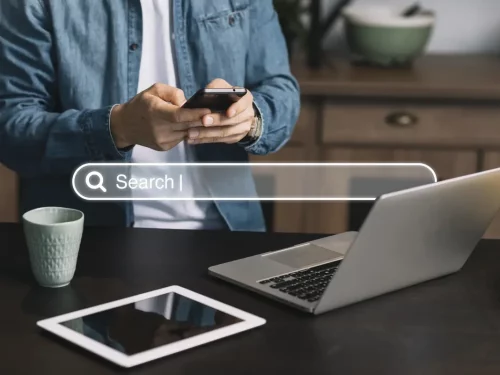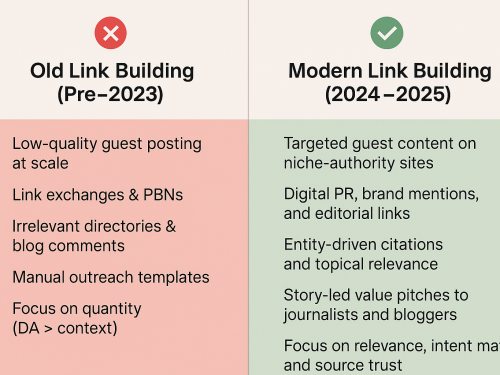
Internal and external links are important factors in determining a website’s visibility and rating in the field of search engine optimization (SEO).
By carefully implementing these connections into the structure and content of your website, you may improve overall performance, boost organic traffic, and improve user experience.
In this post, we will look at the significance of internal and external links in SEO and offer practical advice on how to use them successfully.
The purpose is to make your website more visible and accessible to search engines. Internal and external links are essential elements that greatly contribute to achieving this goal.
Both types of links serve different purposes but work together to improve your website’s overall performance.
1. What are Internal Links?
Internal links are hyperlinks that connect different pages within the same domain. These links allow users to navigate through your website and guide search engines to discover and index your content effectively. Internal links are typically found in the main navigation menu, footer, sidebar, and within the body of the content itself.
#. Definition and Purpose
Internal links serve as the foundation of a website’s architecture. They build a network of interconnected pages with a hierarchical structure.
The major goal of internal links is to assist users in efficiently navigating your website, finding relevant information, and exploring related topics. Internal links aid search engines in understanding the relationship between distinct sites and determining the value and relevancy of each page.
#. Benefits of Internal Links
Internal links offer several benefits for both users and search engines:
- Improved Navigation: Internal links make it easier for users to navigate through your website and find the information they are looking for.By providing clear pathways to relevant content, you can improve user engagement and decline bounce rates.
- Enhanced Crawling and Indexing: Internal links are used by search engine crawlers to recognize and index new pages on your website.You can guarantee that all of your critical pages are easily visible to search engines by properly putting internal links.
- Established Hierarchy and Relevance: Internal links help establish a hierarchical structure within your website, with the homepage being the most important and authoritative page.By linking to other relevant pages, you can pass on authority and relevance to those pages, enhancing their probabilities of ranking higher in search results.
- Distributed Page Authority:Internal links allow you to distribute the authority and link juice of high-ranking pages to other pages on your website.By linking to important pages from less authoritative pages, you can increase their visibility and organic rankings.
2. Best Practices for Internal Linking
To maximize the benefits of internal links, it’s essential to follow best practices and implement them strategically throughout your website. Here are some tips to help you optimize your internal linking strategy:
#. Creating a Logical Site Structure
The cornerstone for good internal linking is a well-organized site structure. Maintain a clear structure on your website, with the homepage at the top and the following pages divided logically into sections and subcategories. This will help consumers and search engines browse through your material more easily.
#. Using Descriptive Anchor Texts
The clickable words or phrases that compose the visible element of a hyperlink are known as anchor texts. Use informative and relevant anchor phrases that appropriately describe the target page when generating internal links.
Avoid using general terms such as “click here” or “read more” in favor of keyword-rich anchor texts that give context to both users and search engines.
#. Linking to Relevant and Related Pages
When inserting internal links, prioritize linking to pages that are contextually relevant to the content being discussed.
By linking to related pages, you provide users with additional information and encourage them to explore deeper into your website. Additionally, linking to relevant pages signals to search engines the topic and relevance of your content.
3. What are External Links?
External links, also known as external links, are hyperlinks that direct visitors to other websites on the internet.
External links are good for SEO because they provide additional information and resources for your users while also contributing to the overall authority and credibility of your website.
External links can be found within the content, author bio, or references section of your web pages.
#. Definition and Purpose
External links serve multiple purposes, including:
- Providing Additional Information: External links direct users to reputable sources that support or expand upon the information provided on your website. This enhances the credibility and value of your content.
- Building Relationships and Authority: By linking to other websites, you establish relationships with other industry experts and authorities. This can lead to reciprocal linking and collaborations, which further strengthen your website’s authority in the eyes of search engines.
- Receiving Traffic and Referrals: When other websites link back to your material, external links can generate traffic to your website. This can increase your visibility and attract new visitors.
- Improving User Experience: By linking to relevant and high-quality external resources, you enhance the user experience, as users can easily access additional information or resources without leaving your website.
#. Benefits of External Links
Although external links may direct users away from your website, they offer several benefits:
- Credibility and Trust: Linking to reputable and authoritative websites helps establish your website as a credible source of information. This builds trust with both users and search engines.
- Relevance and Context: External links add value to your content by providing additional context and information. By linking to relevant resources, you enhance the user experience and demonstrate expertise in your industry.
- Networking and Relationship Building: Linking to other websites can lead to networking opportunities and collaborations with industry influencers and authorities. These relationships can result in future link-building opportunities and increased exposure.
- Improved Search Engine Rankings: External links are noticed by search engines as a vote of confidence and authority. When high-quality websites link to your content, search engines regard it as trustworthy and deserving of higher rankings.
4. Best Practices for External Linking
When incorporating external links into your content, it’s important to follow best practices to maximize their impact on your SEO efforts. Here are some tips for effective external linking:
#. Earning High-Quality Backlinks
Focus on earning backlinks from authoritative and relevant websites in your industry. Create high-quality content that others will inherently want to link to, such as informative articles, research studies, or unique resources.
Outreach to influencers and thought leaders in your niche to promote your content and increase the chances of earning valuable backlinks.
#. Building Relationships with Influencers and Authorities
Engage with influencers and authorities in your industry by mentioning them in your content or linking to their articles.
Reach out to them and let them know about the mention or link, which can lead to potential collaborations and future link-building opportunities.
#. Guest Blogging and Collaborative Content
Guest writing on respected websites gives you the opportunity to demonstrate your knowledge while also establishing ties with other website owners.
Include relevant and contextual links back to your own website within your guest posts. Collaborative content, such as expert roundups or interviews, can also provide opportunities for external linking and relationship building.
#. Monitoring and Disavowing Low-Quality Links
Regularly monitor your website’s backlink profile to identify any low-quality or spammy links. Use tools like Google Search Console or third-party tools like Ahrefs or Moz external links to analyze your backlinks.
If you come across any harmful or irrelevant links, take steps to disavow them to prevent them from negatively impacting your SEO efforts.
Looking for Search Engine Optimization Services? Let’s connect!
5. How Internal and External Links Work Together
Internal and external links work together to enhance your website’s overall performance and SEO. Here’s how they complement each other:
#. Enhancing Crawling and Indexing
Internal links help search engine crawlers browse and find the pages on your website. You can guarantee that all of your critical pages are efficiently accessible and indexed by search engines by carefully establishing internal links.
External links, on the other hand, can boost traffic and attract crawlers from other websites, allowing them to find and index your material.
#. Establishing Authority and Relevance
Internal links help distribute authority and relevance throughout your website. By linking to important pages from your homepage or high-ranking pages, you pass on authority and signal their importance to search engines.
External links, particularly from reputable and authoritative websites, further validate your website’s authority and relevance in the eyes of search engines.
#. Improving User Experience and Navigation
Both internal and external links play a critical role in improving user experience and navigation. Internal links help users find relevant information within your website, leading to increased engagement and reduced bounce rates.
External links provide users with additional resources and information, enhancing their overall experience on your website.
6. Tools and Resources for Link Analysis
Several tools are available to help you analyze and monitor your website’s internal and external links. Here are a few popular ones:
#. Google Search Console
Google Search Console gives significant insights into the performance of your website in search results.
It provides information on internal and external links, such as which pages are connected internally and externally, the anchor texts utilized, and the number of external sites that link to your material.
#. Ahrefs
Ahrefs is a comprehensive SEO tool that offers a range of features, including link analysis. It provides detailed data on your backlink profile, allowing you to monitor and analyze the quality and quantity of your external links.
Ahrefs also offers insights into your competitors’ backlink profiles, helping you identify potential link-building opportunities.
#. Moz
Moz is another popular SEO tool that offers link analysis features. Moz’s Link Explorer provides comprehensive data on your backlink profile, including link quality, anchor texts, and domain authority.
It also offers a feature called Link Intersect, which authorizes you to compare your backlink profile with your competitors and identify potential link-building opportunities.
Also Read: Enterprise SEO Strategies: Boost Your Online Presence
7. Conclusion
Internal and external links are critical elements of a successful SEO strategy. By strategically incorporating internal links within your website’s structure and content, you can enhance navigation, improve crawling and indexing, and establish authority and relevance.
External links, on the other hand, contribute to credibility, provide additional information, and signal authority to search engines. By leveraging both types of links effectively, you can boost your website’s visibility, increase organic traffic, and improve user experience.
Remember to follow best practices, monitor your link profile, and continuously seek opportunities for link-building and relationship-building to maximize the benefits of internal and external links in SEO.
EvenDigit
EvenDigit is an award-winning Digital Marketing agency, a brand owned by Softude (formerly Systematix Infotech) – A CMMI Level 5 Company. Softude creates leading-edge digital transformation solutions to help domain-leading businesses and innovative startups deliver to excel.
We are a team of 70+ enthusiastic millennials who are experienced, result-driven, and hard-wired digital marketers, and that collectively makes us EvenDigit. Read More




